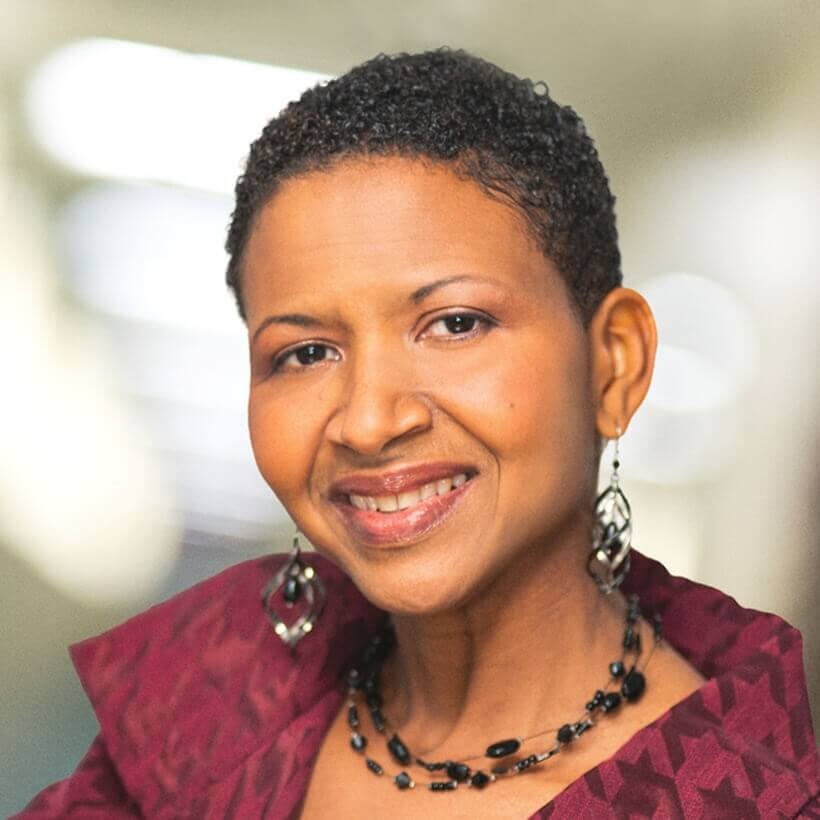

I have learned that many people come to City of Hope for a second opinion, and then opt to stay. For me, City of Hope was my first, and only, choice. From the start, I knew it was a good match for me. The integrative approach to treatment, in particular, meshed with my own point of view about health and quality of life. I appreciated the fact that my care team looked at me as a whole person, not as a disease.
Disclaimer
One morning while getting dressed, I noticed that my nipple was inverted. I figured it was nothing, maybe due to the position I'd slept in, and went on with my day. That night, the inversion was still there and I knew something wasn't right.
I contacted my gynecologist and was given an appointment four weeks away. My best friend, who is a nurse, told me to call back and say it's an emergency. I was at the office a few days later getting a mammogram. I’d had my annual mammogram earlier that year, but it did not reveal any potential cancer at that time. I’d also had a biopsy of a suspected breast tumor many years prior that came back benign, but I never considered the possibility that cancer could develop later in my life.
Following the mammogram, the doctor ordered a biopsy because she saw something from my test that concerned her. A few days later I received the phone call informing me that I had breast cancer. I was 45 years old at the time.
My first choice
In addition to my actual mother, there are two other women in my life who are like mothers to me. My second “mom,” who has known me since high school, knows a lot about health and wellness, so she was the first person I called after being diagnosed. She warned me about one of the regional hospitals near my home in Delaware, and encouraged me to call Cancer Treatment Centers of America® (CTCA).*
I have learned that many people come to CTCA® for a second opinion, and then opt to stay. For me, CTCA was my first, and only, choice. From the start, I knew it was a good match for me. The supportive approach to treatment, in particular, meshed with my own point of view about health and quality of life. I appreciated the fact that my care team looked at me as a whole person, not as a disease.
My treatment consisted of a lumpectomy followed by a re-excision with IORT to remove additional tissues and, finally, chemotherapy. I continued to work during this time, driving to CTCA before or after the workday.
Getting a boost
The side effects I experienced were mostly minimal, but chemotherapy did decrease my white blood cell count. I had two medications to help boost the white blood cell count, one of which I needed to self-inject at home. I was resistant because I’m uncomfortable with needles. I told my oncologist that I had no idea how I was going to get through this. But the infusion nurse showed me how to do it and I became more confident with each injection. At first, it took me 20 minutes to get the needle in. I had to talk myself through it and play games with the clock. Over time, the process became easier. Getting through this time showed me that I could do something that I thought I couldn’t.
In general, I’m a fairly independent person, and usually the one that others come to when they need help. However, during my treatment, I learned to ask for help. My caregivers and my church family were there when I needed them—and I did need them.
* Cancer Treatment Centers of America® (CTCA) is now City of Hope®, working together to expand patient access to personalized, comprehensive cancer care. Because this patient testimonial was written and published before CTCA® and City of Hope joined forces, mentions of legacy CTCA locations have not been updated in the interest of maintaining the patient’s original voice and story details.
